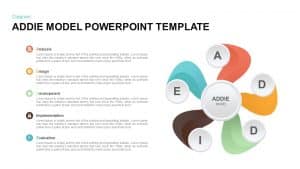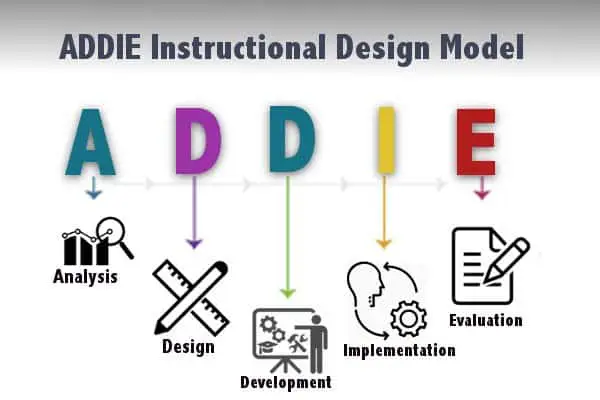What is instructional design?
Instructional design is a systematic process that is employed to develop training and education programs in a steady and reliable fashion. Besides, it is a thought framework for developing syllabus or modules. So, instructional design needs an integrated approach to develop lessons and that should be easily understandable to the beneficiaries. In other words, instructional design is the creation of materials and learning experience in a way that results in the gaining and application of knowledge and skills. The subject follows a system of understanding needs, planning a process, developing materials and assessing their effectiveness. In the environment of workplace learning, Instructional Design provides an applied and methodical process for effectively designing effective curricula. In education, the important thing is how you can instruct the topics without losing the core message. Similarly, in the work context how you can arrange the office to get maximum productivity from the employees.
An instructional designer applies this organized methodology to design and develop syllabus, experiences, and other solutions to support a gathering of new knowledge or skills. Instructional designers should start by conducting a needs assessment to determine the needs of the learning event, including what the learner should know and be able to do as an outcome of the teaching or training solution, and what the learners already know and can do. The instructional designers are responsible for framing innovative course design and developing all instructional materials, including participant guides, presentation materials, training methodologies, handouts, and other materials. They are also responsible for evaluating the results, including measuring what was learned and whether the learning solution led to visible behavior change.

There is number of instructional design models and processes, but many of them provide a similar pattern of designing. Whether it is educational designing or workplace designing, there are some common elements of patterning; these include need assessment, analysis, design, development and evaluation. The concept of education is also changing, today; education put more importance on life skill development rather than bookish knowledge. We get into this knowledge after a detailed study of the science of learning, and of course, the purpose of learning. Life skill education has forwarded new concepts such as learning to be, learning to know, and learning to live together. These are based on the need assessment of the people and then create a suitable content that is called life skill education. All these efforts are taken by instructional designers and researchers.
Common design models
• ADDIE
• Cathy Moore’s Action Mapping
• Dick and Carey Model
• Kemp Design Model
• Merrill’s First Principles of Instruction
• SAM (Successive Approximation Model)
• Agile or rapid prototyping
• Cathy Moore’s Action Mapping
• Dick and Carey Model
• Kemp Design Model
• Merrill’s First Principles of Instruction
• SAM (Successive Approximation Model)
• Agile or rapid prototyping
Despite the abundance of other models, ADDIE (Analysis, Design, Development, Implementation, and Evaluation) remains to be one of the most commonly used instructional design models. In recent years, there has been a push to apply more agile, iterative methods, including Michael Allen’s Successive Approximation Model (SAM). Agile models, such as SAM involve shorter design sprints where a prototype is quickly created, reviewed, and revised, with the process repeating until stakeholders are happy.
Future of instructional design
Whether you’re developing classroom instruction, an on-learning course, or an on-demand performance support solution following sound instructional design processes will help you create better more successful solutions. As the business world continues to change, so do organizations and their learning functions. Suppleness, imagination, and innovation are becoming more valued. As a consequence, agile and iterative design models becoming more common. Instructional designers are also copying more features from the areas of User Experience (UX) Design and Design Thinking. No matter where the teaching and aptitude development field goes or what technologies are on the skyline, a solid background in instructional design will always be prized. The ADDIE model may continue as a parenting model of instructional design.
ADDIE MODEL
Addie model is the most commonly used instructional design used by training developers and educational experts. It involves five phases of designing. The abbreviation stands for Analysis, Design, Development, Implementation, and Evaluation. The Addie model represents a dynamic, simple guideline for building effective training and performance support tools. As a commonly used design model, it has a number of weaknesses, which have led to various variations or spin-offs.
Instructional models also play a crucial role in the design of instructional tools. Theories such as behaviorism, constructivism, social learning and cognitive learning help shape and define the result of instructional materials.
Instructional models also play a crucial role in the design of instructional tools. Theories such as behaviorism, constructivism, social learning and cognitive learning help shape and define the result of instructional materials.

In the ADDIE model, each step has a result that feeds into the succeeding step.
Analysis, Design, Development, Implementation, Evaluation
Let’s uncover each step;
Analysis phase
In this stage, the purpose of instructional design is clarified, the instructional aims and objectives are recognized and the learning environment and learner’s current knowledge and talents are identified. Below are some of the questions that are addressed during the analysis stage:
• Who are the learner and what their characteristics are?
• Identify the new behavioral outcome?
• What types of learning limits exist?
• What are the transfer options?
• What are the online instructive considerations?
• What is the intended timeline for project completion?
• Identify the new behavioral outcome?
• What types of learning limits exist?
• What are the transfer options?
• What are the online instructive considerations?
• What is the intended timeline for project completion?
Analysis usually includes understanding the needs and why training and learning solution required. In this phase, you’ll also begin to develop the goals of the training, including learning goals, and determine how the training will be delivered.
Design phase
In this phase, the actual designs of the instructional materials are formed. The design phase deals with learning objectives, exercises, content, assessment instruments, subject matter analysis, module planning and media selection. The design phase should be systematic and specific. Systematic means a logical, orderly method of identifying, developing and evaluating a set of intentional strategies targeted for reaching the project’s goals. Specific means each part of the instructional design plan needs to be effected with attention to details. The following steps are used in the design phase:
• Documentation of the project’s instructional, visual and technical design scheme
• Execute instructional strategies according to the intended behavioral outcomes by the domain (cognitive, affective, and psycho-somatic).
• Make storyboards
• Design the user interface and user experience
• Prototype creation
• Apply visual design (graphic design). Even the PowerPoint designs should be done in accordance with the instructional design strategies.
• Execute instructional strategies according to the intended behavioral outcomes by the domain (cognitive, affective, and psycho-somatic).
• Make storyboards
• Design the user interface and user experience
• Prototype creation
• Apply visual design (graphic design). Even the PowerPoint designs should be done in accordance with the instructional design strategies.
Development Phase
The development phase is where the developers craft and assemble the content assets that were shaped in the design phase. Programmers work to develop and/or incorporate technologies. Testers perform correcting procedures. According to the feedback given, the project will be reviewed or revised.
Implementation Phase
During the implementation phase, a process for training the organizers and the learners is developed. The facilitators’ training should cover the course curriculum, method of delivery, learning outcomes, and testing procedures. Preparation of the learners includes training them on new devices such as hardware and software.
Evaluation phase
The evaluation looks at how you determine whether your training or learning solution was successful. Did it create a measurable or observable impact on the learner’s behavior and did that lead to the anticipated outcomes back on the job. These are based on the feedback that you get from the audience.

There is more than a 100 varied instructional design model and many of these are based on the basic ADDIE model. The linear process Addie model acts as a foundation stone for ISD approach. The ISD approach is a behaviour-oriented model which insists that fixed abilities be learned and that the trainee’s abilities show these qualifications. Both behavioral and cognitive approaches are blend with the instructional designing scheme, and it utilizes the learning theories of the two broad approaches of psychology. Besides, constructivism plays an essential role in developing instructive designs.
The evaluation strategy of ISD approach is based on the progressive changes of the audience or the learner. An expert can change his/her views after assessing the behavior changes. They can use postmodern ideas and assumptions rather than learning theories. The purpose of the design relies on explicit guidance on how to better help people learn and develop. Learning development and its assessment may include emotional, cognitive, social, physical and spiritual levels of the learner. After developing specific ISD model, one can examine the progressive changes by “learning curve”. The amount of progressive gains and the changes in behavior can analyze by controlled experiments.
Conclusion
Instructional design is an approach that helps you to develop progressive behavior changes and it will make learning easy. One of the major objectives is the easy comprehension of the learning subject. That means when you design content or a module you have to make simple phrases for easy to learn. Similarly, when you design an app or education software it should be user-friendly and make an easy understanding of the topic. ISD approach covers almost all area of information passing and the style of your educational technologies.

Comments
Post a Comment